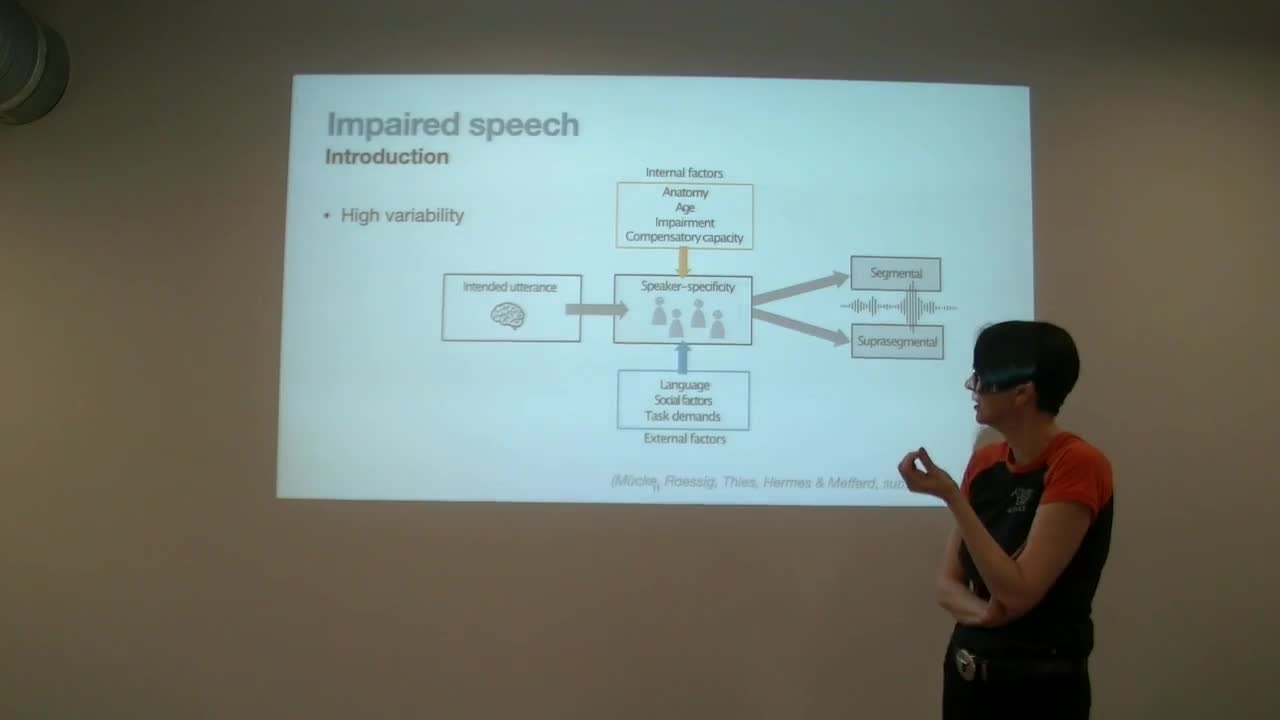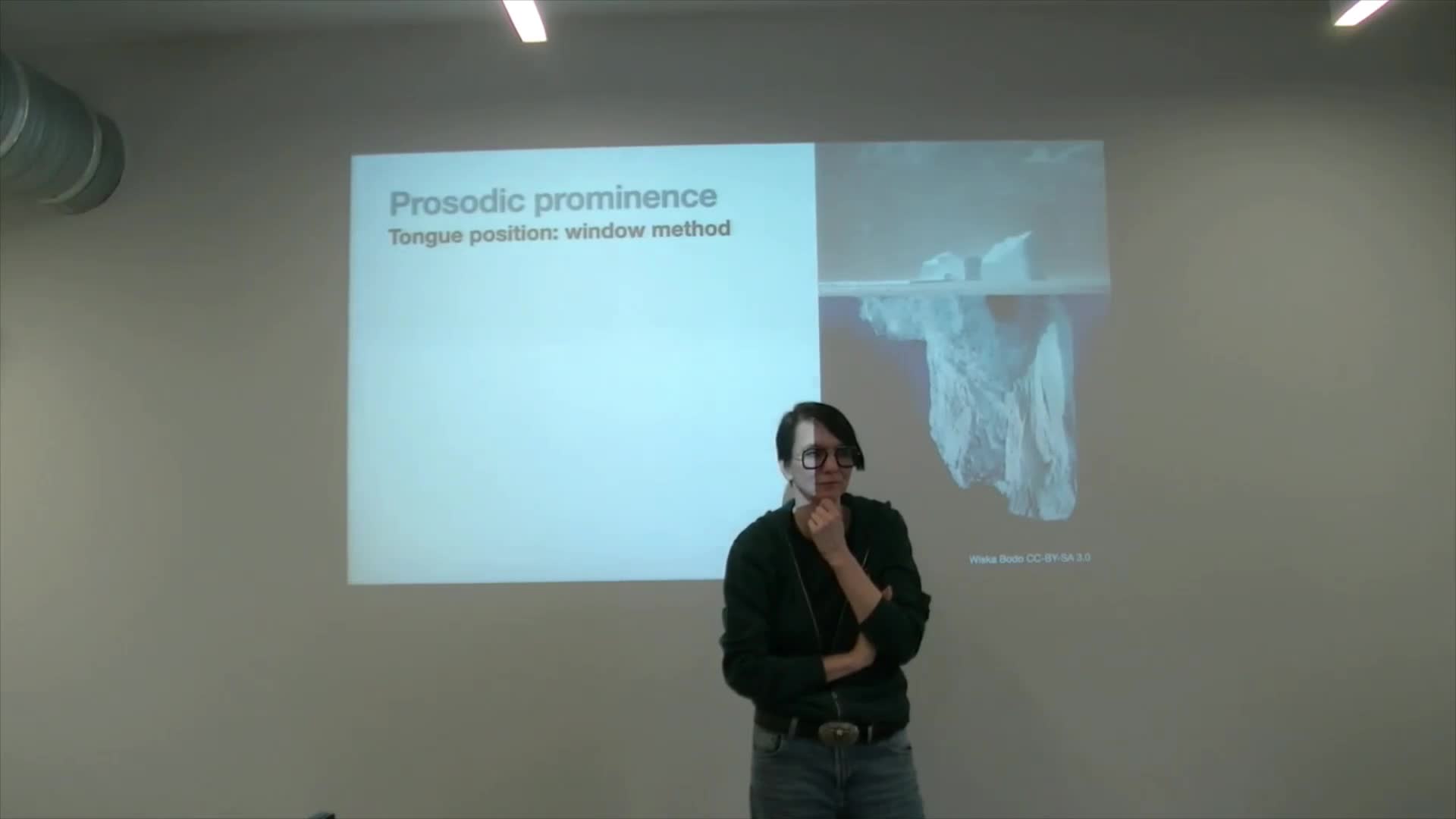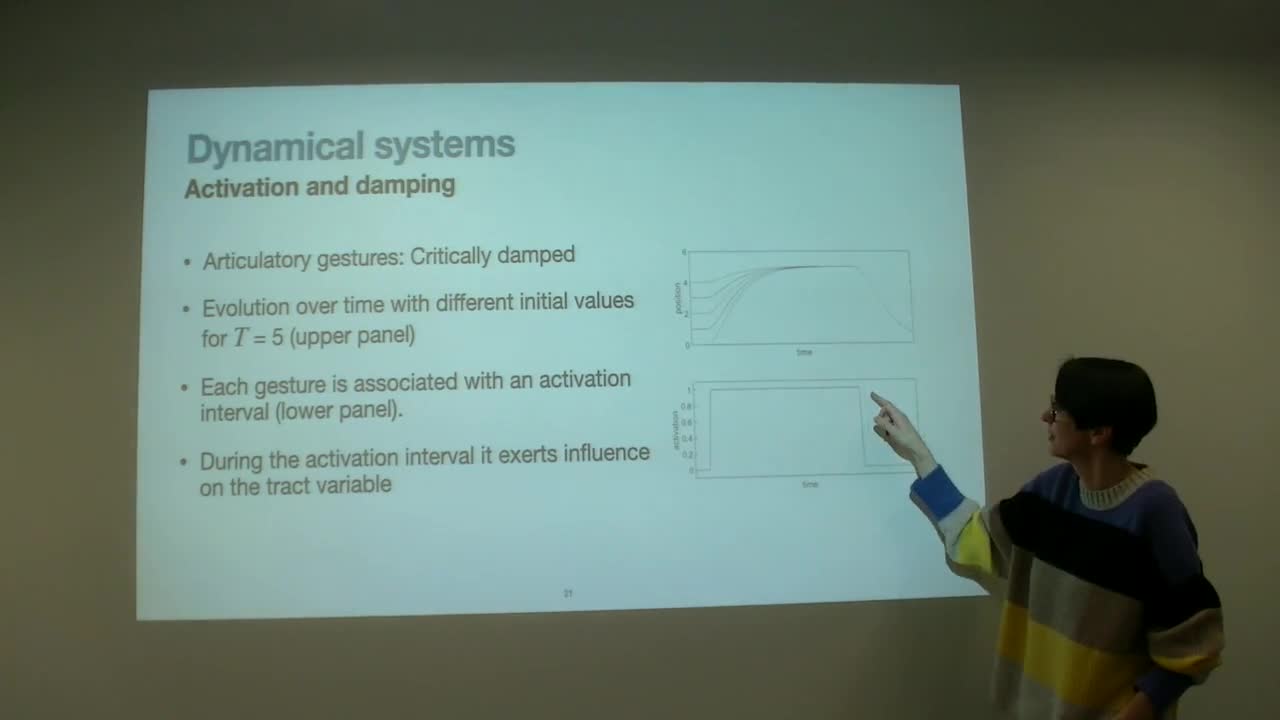Notice
Doris Mücke - Speech dynamics: Modelling unpredictable patterns in speech production
- document 1 document 2 document 3
- niveau 1 niveau 2 niveau 3
Descriptif
The flexibility of dynamical systems has recently been described as being insufficient to account for perturbated or highly noisy speech (Parrell & Lammert 2019), such as the speech output of patients with movement disorders (Parkinson’s disease). The shape of the kinematic contours can deviate considerably from those predicted by the models and an application of these models to impaired speakers can be even more difficult. In a critical discussion, I propose the introduction of stochastic noise as a random variable in dynamic simulations. I will conclude that noise plays also a role in modelling neurotypical speech – ranging from syllable repetition tasks to natural sentence production.
Intervention / Responsable scientifique
Thème
Avec les mêmes intervenants et intervenantes
-
Doris Mücke - Speech dynamics: Applying speech dynamics to impaired speech and aging
MückeDorisSpeech dynamics: Mapping phonetic surface to phonological forms in neurotypical and atypical speech (Doris Mücke) 3. Applying speech dynamics to impaired speech and aging
-
Doris Mücke - Speech dynamics: Dealing with the complexity of prosodic systems
MückeDorisSpeech dynamics: Mapping phonetic surface to phonological forms in neurotypical and atypical speech (Doris Mücke) 2. Dealing with the complexity of prosodic systems
-
Doris Mücke - Speech dynamics: Basics and challenges of speech dynamics
MückeDorisSpeech dynamics: Mapping phonetic surface to phonological forms in neurotypical and atypical speech (Doris Mücke) 1. Basics and challenges of speech dynamics




